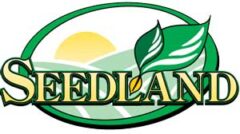Seedland’s PREMIUM
SEED DOMAIN PORTFOLIO ….
Welcome to Seedland.com

OUR PREMIUM SEED DOMAIN PORTFOLIO … In business use for over 23 years – NOW FOR SALE. *Domains & Page WordPress Structure without content.*
SEED DOMAINS FOR SALE –
STARTING APRIL 1ST, 2024
513 @ Premium Seed Domains
As of January 2024, Seedland.com no longer sells lawn products. But we are in the process of passing our INTERNET INFORMATION & DOMAINS on to others who can continue to help our seed customers worldwide.
Thank you to the millions of visitors that enjoyed our lawn & garden information pages AND a THANK YOU for supporting us for 23 Years with over 50 Million unique visitors to our family of Lawn & Garden websites. We appreciate the hundreds of thousand of satisfied customers over the years that purchased our quality products during our twenty three years of business…
Right now we are in the process of RE-DESIGNING OUR SITE STRUCTURE & INFORMATION – Hopefully a new owner will soon be creating an even better shopping experience. We are working now to BOTH improve the next version of our company and also WORKING HARD to retire and divest our companies assets to the next generation of the SEED WORLD & Agriculture.
We have 500+ high value QUALITY domains names that relate to SEEDS, Lawn & Garden, Wildlife and Agriculture crops including Turf grass. Row Crops & Pastures – All FOR SALE…
In addition to 125 LEGACY MAJOR DOMAINS – We also have 388 supporting domains that will allow the new online version of “Seedland.com” to offer better information… AND sell even more products with the help of our friendly & detailed product information websites. We will DOMINATE the seed world!
AT THIS TIME WE EXPECT THE SEED INDUSTRY DOMAINS WILL BE SOLD AS “ONE” PORTFOLIO. (Seeds Domains only in one large inter-connected group!)
We do not expect to sell any domains individually. As soon as possible we will provide more information including contact details should you or your company be Interested acquiring this VERY RARE offer of a Digital E-Commerce Company. In the next 30-60 days we will be posting a LOT of details about Seedland, including how any resourceful seed company or garden center can use out Digital Assets & DOMAIN NAMES to greatly increase their viability to make sales world wide.
A FULL LIST of FOR SALE DOMAINS IS ON OUR MANY BROCHURES
The Domain amount (Actual domains in portfolio) fluctuates as we ADD NEW Domains based on our 50+ years of experience in Agriculture, Seeds – Including 25 years of extensive internet and marketing knowledge & sales…. All of this helps us make decisions about creating the VERY BEST INTERNET SITE EVER online. – One that will be available FOR SALE at SEEDLAND.COM and eventually SOLD in 2024 .
YES. IT WILL SELL.
IT IS ONLY FOR THAT REASON WE HAVE CREATED THIS NEW SEED BUSINESS INTERNET SITE & MARKETING PLAN… *** AND WEBSITE ***
WITH COMING UP ON “60” YEARS WORKING IN Seeds & AGRICULTURE (We started at 13 years old) – THIS IS ENOUGH! FIRST WITH 35 YEARS GROWING MILLIONS OF POUNDS OF SEEDS,
And NOW 25 YEARS LATER… MILLION OF DOLLARS OF SALES VIA ONLINE INTERNET MARKETING OF SEEDS…. WE WILL !!! SELL & TRANSFER OUR KNOWLEDGE & CREATIVE VISION & IDEAS ON TO THE NEXT GENERATION FOR USE. –
It is sort of a cumulative career choice, & a hard working “ending” thanks to Agriculture, Both Good to me and Honored by me!
Thank you,,, for visiting today– Mike.
Be sure to visit our…..
GARDENING DOMAIN PORTFOLIO web site at GardenPatio.com – 370 Gardening web domains!
<TEMP SITE code holder>
<script async src="https://cse.google.com/cse.js?cx=002484356081656558721:efyam5aafvw">
</script>
<div class="gcse-search"></div>Looking for the best seeds for your new lawn? Check out the various types of grass seeds available at Amazon for growing and creating beautiful new lawns .
QUALITY GRASS SEED CHOICES via our affiliate link at Amazon.com.

